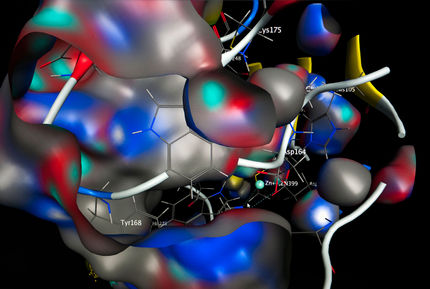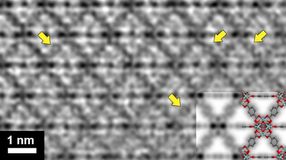Ötzi’s “non-human” DNA
Ötzi’s human genome was decoded from a hip bone sample taken from the 5,300 year old mummy. However the tiny sample weighing no more than 0.1 g provides so much more information. A team of scientists from EURAC in Bolzano/Bozen together with colleagues from the University of Vienna successfully analysed the non-human DNA in the sample. They found evidence for the presence of Treponema denticola, an opportunistic pathogen involved in the development of periodontal disease. Thus, by just looking at the DNA, the researchers could support a CT-based diagnosis made last year which indicated that the Iceman suffered from periodontitis. The results have been published in PLOS ONE.
Much of what we know about Ötzi – for example what he looked like or that he suffered from lactose intolerance – stems from a tiny bone sample which allowed the decoding of his genetic make-up. Now, however, the team of scientists have examined more closely the part of the sample consisting of non-human DNA. “What is new is that we did not carry out a directed DNA analysis but rather investigated the whole spectrum of DNA to better understand which organisms are in this sample and what is their potential function”, is how Frank Maixner, from the EURAC Institute for Mummies and the Iceman in Bozen/Bolzano, described the new approach which the team of scientists are now pursuing.
“This ‘non-human’ DNA mostly derives from bacteria normally living on and within our body. Only the interplay between certain bacteria or an imbalance within this bacterial community might cause certain diseases. Therefore it is highly important to reconstruct and understand the bacterial community composition by analysing this DNA mixture,” said Thomas Rattei, Professor of Bioinformatics from the Department of Microbiology and Ecosystem Science at the University of Vienna.
Unexpectedly the team of scientists, specialists in both microbiology as well as bioinformatics, detected in the DNA mixture a sizeable presence of a particular bacterium: Treponema denticola, an opportunistic pathogen involved in the development of periodontitis. Thus this finding supports the computer tomography based diagnosis that the Iceman suffered from periodontitis. Even more surprising is that the analysis of a tiny bone sample can still, after 5,300 years, provide us with the information that this opportunistic pathogen seems to have been distributed via the bloodstream from the mouth to the hip bone. Furthermore, the investigations indicate that these members of the human commensal oral microflora were old bacteria which did not colonise the body after death.
Besides the opportunistic pathogen, the team of scientists led by Albert Zink – head of the EURAC Institute for Mummies and the Iceman – also detected Clostridia-like bacteria in the Iceman bone sample which are at present most presumably in a kind of dormant state. Under hermetically sealed, anaerobic conditions, however, these bacteria can re-grow and degrade tissue. This discovery may well play a significant part in the future conservation of the world-famous mummy. “This finding indicates that altered conditions for preserving the glacier mummy, for example when changing to a nitrogen-based atmosphere commonly used for objects of cultural value, will require additional micro-biological monitoring,” explained the team of scientists who will now look closer at the microbiome of the Iceman.
Most read news
Topics
Organizations
Other news from the department science

Get the life science industry in your inbox
By submitting this form you agree that LUMITOS AG will send you the newsletter(s) selected above by email. Your data will not be passed on to third parties. Your data will be stored and processed in accordance with our data protection regulations. LUMITOS may contact you by email for the purpose of advertising or market and opinion surveys. You can revoke your consent at any time without giving reasons to LUMITOS AG, Ernst-Augustin-Str. 2, 12489 Berlin, Germany or by e-mail at revoke@lumitos.com with effect for the future. In addition, each email contains a link to unsubscribe from the corresponding newsletter.






















































